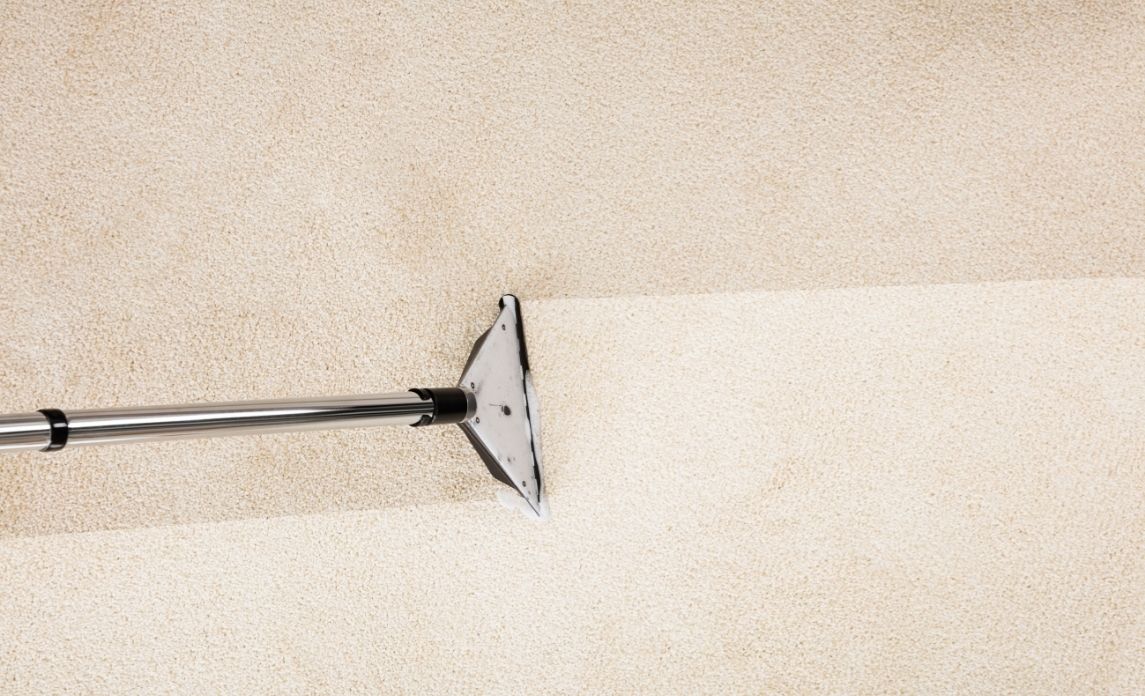Carpet has a pretty tough job. It’s trampled on all day long, gets covered in dirt and dust, has food and drink dropped all over it, and suffers constant wear and tear. The carpets in an office or workspace are incredibly high traffic areas, and can quickly become grubby and unpleasant.
Vacuuming is good, but it’s not quite enough! Do-it-yourself steam cleaners are a good option for keeping the carpet surface clear of dirt, but it will not penetrate deeper down to take care of what’s lurking underneath. As part of your commercial cleaning or office cleaning schedule, professional deep carpet cleaning is a must.
Keeping carpets healthy and clean has many benefits for a workplace:
- Dirt, dust, and allergens from carpet make their way into the air, which can cause respiratory issues, allergies, and sinus problems. Deep carpet cleaning eliminates these problems, meaning healthier staff and less people needing sick days.
- Dust mites are actually quite common, but because of their microscopic size it’s often impossible to know you have an infestation. The mites themselves don’t do any real harm, but their waste particles can aggravate allergies. Regular carpet cleaning will keep these infestations at bay.
- Visitors to your office, as well as the people working there, will be put off by obviously dirty surroundings. Clean and presentable carpet makes a much better impression!
- Blotchy stains are a common site in the office, especially around break rooms, lunch areas, and desks. In an office or workplace environment, culprits will most often leave their mess behind which allows the stain to set in. Professional office carpet cleaning will keep on top of this issue and reduce the marking caused by stains.
If carpets are not cleaned regularly they become dull and dirty, and it shortens the life of the carpet, meaning you will have to replace it sooner. Below are some common issues caused by unclean carpet. If you are noticing any of these around your office building, it’s time to take action:
-
Stains – dirty patches all over the floor aren’t a great look. Whether it’s caused by a rogue coffee cup or some leaky printer ink, it can really make a workplace unsightly.
-
Odour – what’s that smell? You’ve cleared the fridge, wiped down the desks, tossed the rubbish – so why does the office still stink? The answer is most likely under your feet! Bad carpet odours can be a real challenge. They are caused by spills and stains that haven’t been cleaned up, and just general dirt and uncleanliness. Carpets will also grow mould from food residue or dampness if they aren’t regularly cleaned and aerated.
-
“Traffic lanes” – carpet traffic lanes are the dark, worn down tracks that show up in main walkways and other heavy traffic areas. Traffic lanes are caused by large volumes of dirt that sit in the carpet, which are then trampled in over and over again. Dirt is very abrasive to carpet fibres and quickens the wearing process, and so by keeping them clean you will help them last longer.
-
Dark edges – If you have lighter coloured carpet, you might notice that the very edges of the carpet start to darken. How? No one walks there?! This is also known as draught marking, and it is actually caused by airflow (from air conditioning or windows and doors), which carries and drops dirt along the walls.
How does deep carpet cleaning work?
There are a few different methods for deep carpet cleaning, and the method used will depend on the type (or types) of issue. Your carpet cleaners might use:
-
Spot cleaning – The really old or really tough stains might need some extra elbow grease. In these cases, spot cleaning prior to a whole carpet clean better reduces the appearance of stains.
-
Steam cleaning – this method uses high-pressure hot water to remove dirt from carpet fibres. It will typically involve using a cleansing agent on the carpet, which is then agitated (by brushes/bristles) to release the trapped dirt. The carpet will then be thoroughly rinsed and left to dry at room temperature.
-
Encapsulation – this is the new and improved version of traditional carpet shampooing. It uses synthetic foam detergents that turn to powder as they dry. Particles of dirt are trapped in the powder, which is brushed or vacuumed off. This method uses less water and has less drying time than carpet shampooing, so has become a more popular option.
-
Dry carpet cleaning – also known as compound cleaning, dry carpet cleaning uses dry chemical cleaning treatments. This means no sticky soaps or detergents, a lot less water and a very short drying time. Traditional carpet cleaning requires thorough ventilation to allow the carpet to dry, in order to prevent mildew and mould growth. Dry carpet cleaning eliminates this hassle.
Crewcare can take care of your commercial carpet cleaning needs, and also offers water damage and flood restoration services. Contact us today to find out how we can help you!


